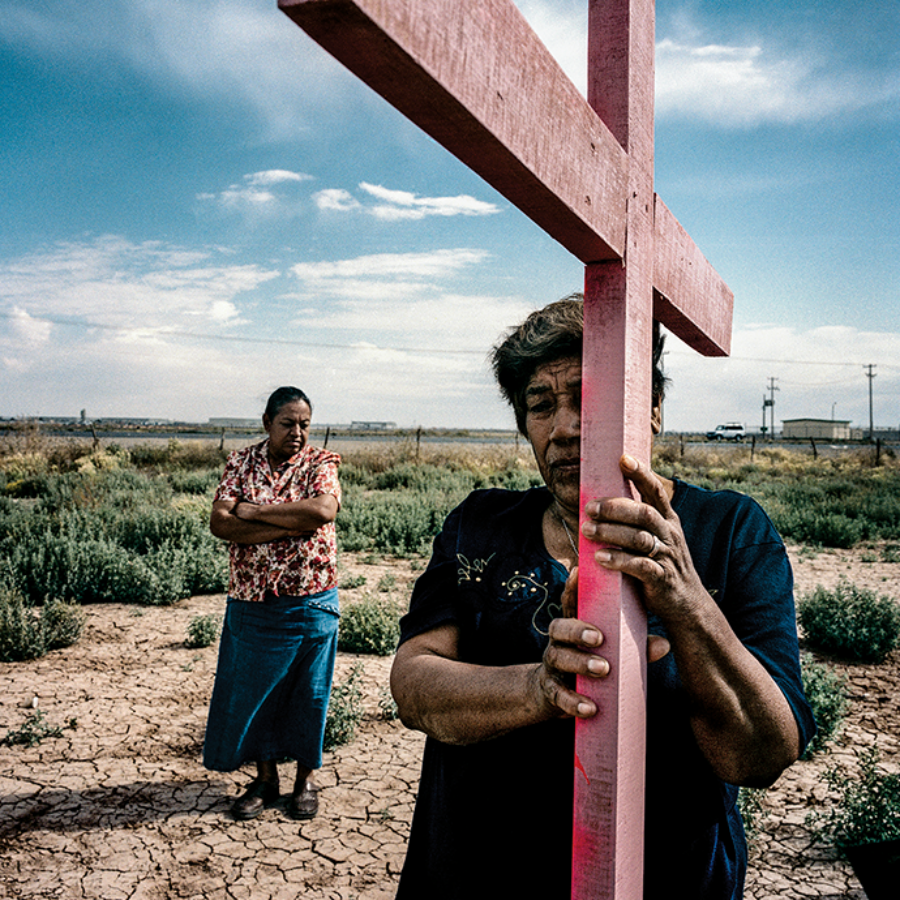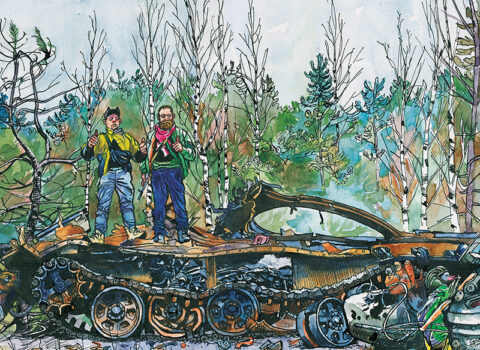
Family members of femicide victims place a memorial in a field outside Ciudad Juárez in 2006. The bodies of eight murdered women were discovered there in 2001. © Maya Goded
Ten yards was the nearest we could get to the river. Any closer and the smell was too much to bear. The water was a milky gray color, as if mixed with ashes, and the passage of floating trash was ceaseless. Plastic bags and bottles, coffee lids, yogurt cups, flip-flops, and sodden stuffed animals drifted past, coated in yellow scum. Amid the old tires and mattresses dumped on the riverbank, mounds of rank green weeds gave refuge to birds and grasshoppers, which didn’t seem bothered by the fecal stench.
El Río de los Remedios, or the River of Remedies,…




